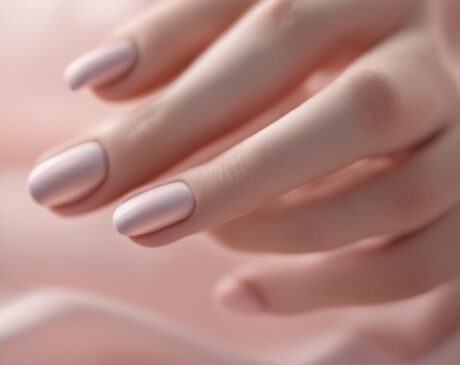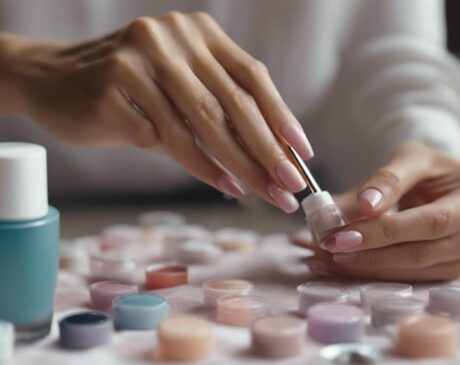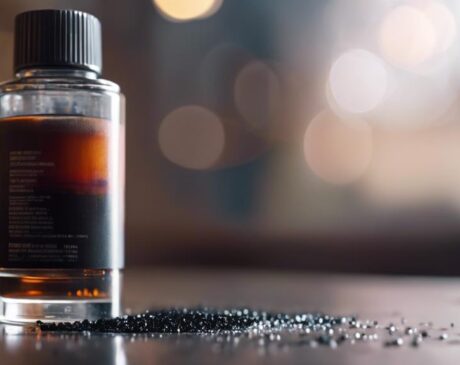Why Wont My Press-On Nails Come Off?
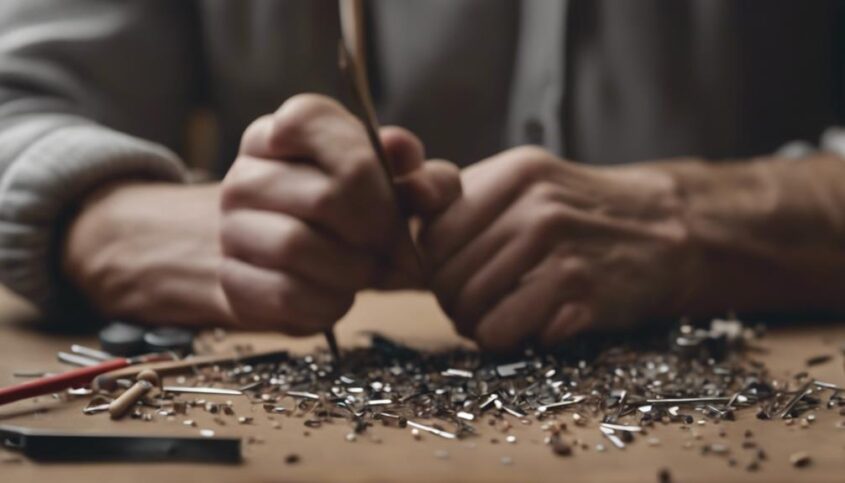
Press-on nails may not come off easily due to strong adhesive bonds. Ensure proper nail preparation with cleansing and buffing. Use non-acetone removers and gently wiggle the nails. Soaking in warm water can help soften the adhesive. Avoid tight application for easier removal. Maintain nail health by hydrating and protecting nails. Opt for quality press-on nails with superior adhesives. For more tips on strengthening nails and choosing the right press-ons, explore further details regarding nail care and removal.
Key Takeaways
- Strong adhesive bonds may require soaking in warm, soapy water to loosen.
- Use non-acetone nail polish remover or adhesive remover for gentle removal.
- Wiggle the nails gently to detach without damaging natural nails.
- Avoid tight application to make removal easier.
- Moisture exposure softens adhesive for painless removal.
Adhesive Bond Too Strong
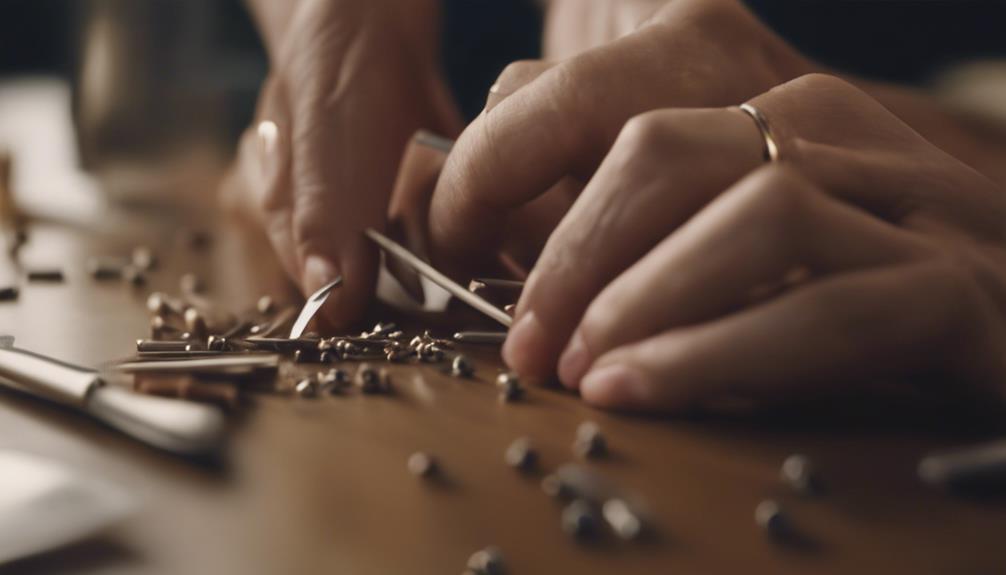
When faced with press-on nails that have an adhesive bond too strong, gentle removal techniques are essential to prevent damage to the natural nail. Instead of forcefully pulling or prying off the nails, innovative methods can be employed to dissolve the bond effectively. One such technique involves soaking the nails in warm, soapy water to help loosen the adhesive. After soaking for a few minutes, gently wiggle the press-on nails from side to side to encourage detachment without causing trauma to the natural nail.
Another innovative approach is to use a non-acetone nail polish remover or a specifically formulated adhesive remover. These products work by breaking down the adhesive bond without dehydrating the natural nail or causing it to become brittle. By applying the remover to the edges of the press-on nails and allowing it to sit for a few minutes, the nails can be easily lifted off without any discomfort or damage.
Innovative removal techniques not only preserve the health of the natural nail but also ensure a hassle-free and painless process when taking off press-on nails with a stubborn adhesive bond.
Improper Nail Prep
Improper nail prep can significantly impact the adhesion and longevity of press-on nails, potentially leading to difficulties during removal procedures. To ensure optimal results when applying press-on nails, proper nail prep is essential. Here are four key factors to consider for effective nail prep:
- Cleanse Thoroughly: Before applying press-on nails, make sure to cleanse your natural nails properly. Any oils, lotions, or residues on the nail surface can hinder the adhesive from sticking securely.
- Buff Gently: Lightly buffing the surface of your nails can help create a slightly rough texture, allowing the press-on nails to adhere better. However, be cautious not to over-buff, as this can weaken the natural nail.
- Use Alcohol: Wiping your nails with alcohol before application can help remove any remaining oils and ensure a clean, dry surface for better adhesion.
- Trim and Shape: Trim your natural nails to the desired length and shape them before applying press-on nails. Properly shaped nails can enhance the overall look and comfort of the press-ons.
Incorrect Removal Technique
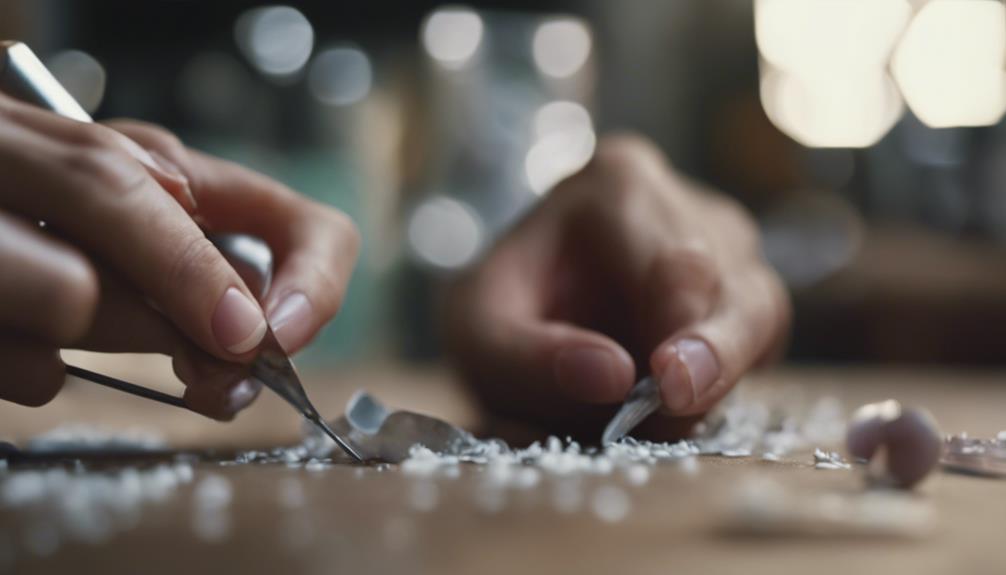
Improperly removing press-on nails can lead to damaged natural nails and pain. Pulling too hard can cause tearing and weakening of the nail bed. Not soaking the nails enough or rushing the removal process can also result in lifted nail layers and potential infection.
Pulling Too Hard
Inadequate care when removing press-on nails can result in damaging the natural nails. When individuals pull too hard to remove press-on nails, the risk of nail damage increases significantly. To avoid this, consider the following innovative tips:
- Gentle Peeling: Instead of forcefully pulling, gently peel off the press-on nails starting from one side.
- Use Oil: Apply cuticle oil or warm water to help loosen the adhesive before removal.
- Wiggle Technique: Wiggle the press-on nails from side to side to break the bond gradually.
- Patience is Key: Allow the nails to soak and soften before attempting removal to prevent damage.
Not Soaking Enough
When removing press-on nails, ensuring adequate soaking time is crucial to prevent damage to the natural nails. Not soaking enough can lead to the adhesive hardening, making it challenging to remove the nails without causing harm. To address this issue, consider soaking your nails in acetone for at least 10-15 minutes. Acetone helps break down the glue, allowing for easier removal. For a more innovative approach, you can try using warm water with a gentle nail polish remover solution or specialized nail removal wraps that enhance the soaking process. By giving your press-on nails sufficient time to soak, you can effectively loosen the adhesive bond and safely remove them, maintaining the health and strength of your natural nails.
Rushing Removal Process
A hasty removal process often results in damage to the natural nails when taking off press-on nails. Rushing through this procedure can lead to weakened or peeled nail beds, causing discomfort and affecting the overall health of your nails. To ensure a safe and effective removal of press-on nails, consider the following innovative tips:
- Use Cuticle Oil: Apply cuticle oil around the edges of the press-on nails to help loosen the adhesive.
- Warm Water Soak: Soak your nails in warm, soapy water for a few minutes to soften the glue.
- Gentle Peeling: Slowly peel off the press-on nails instead of forcefully yanking them off.
- Patience is Key: Take your time during the removal process to prevent damage to your natural nails.
Exposure to Water
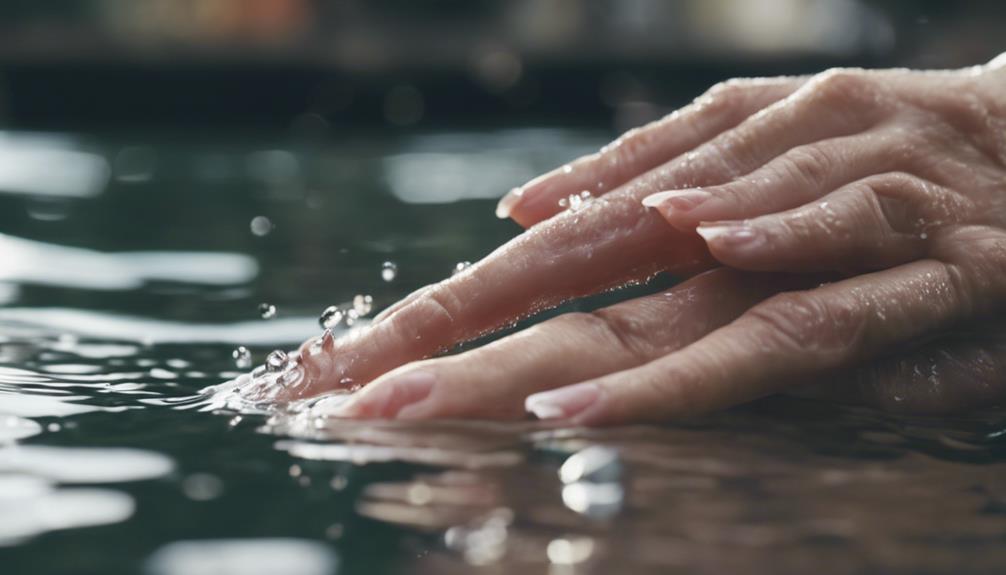
By immersing press-on nails in warm water, the adhesive can be effectively softened for easier removal. This innovative method takes advantage of the adhesive's sensitivity to moisture, allowing for a gentle separation between the artificial nail and the natural nail bed. Warm water helps to weaken the bond created by the adhesive, making it simpler to peel off the press-on nails without causing damage to the natural nails.
Exposure to water is a non-invasive and practical approach that can be easily incorporated into a nail removal routine. To utilize this technique, fill a bowl with warm water and soak your fingertips for a few minutes to allow the adhesive to loosen. As the adhesive softens, gently wiggle the press-on nails back and forth until they detach from your natural nails. This method offers a gentle and effective way to remove press-on nails without the need for harsh chemicals or excessive force, promoting nail health and integrity.
Press-Ons Applied Too Tightly
In cases where press-on nails are applied too tightly, the risk of damage to the natural nails increases significantly. This can lead to various issues such as weakened nail beds, pain, and potential nail breakage. To address this problem and ensure a safe and comfortable experience with press-on nails, consider the following innovative solutions:
- Precision Application Tools: Utilize tools that provide precise control during the application process, preventing excessive pressure on the natural nails.
- Breathable Nail Adhesives: Opt for adhesive products that allow the nails to breathe, reducing the likelihood of suffocating the natural nails due to tight application.
- Customizable Sizing Options: Look for press-on nail sets that offer a wide range of sizes to ensure a perfect fit without the need for excessive force during application.
- Flexible Nail Materials: Choose press-on nails made from flexible materials that can adjust to the natural nail shape, minimizing the risk of tightness and discomfort.
Using Harsh Chemicals
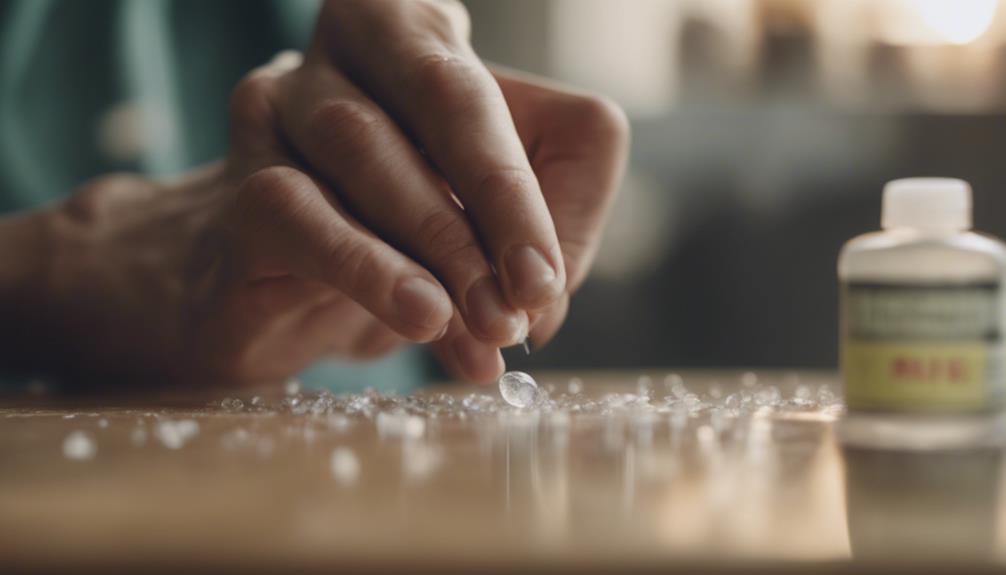
When considering the removal of press-on nails, it is essential to be cautious about the potential risks associated with using harsh chemicals. While these chemicals can effectively dissolve the adhesive used in press-on nails, they can also dry out the natural oils in your nails, leading to brittleness and weakening. It's crucial to strike a balance between efficient nail removal and maintaining nail health.
To give you a clearer idea, here is a table showing some common harsh chemicals used for nail removal and their effects:
| Chemical | Effect | Safety Precautions |
|---|---|---|
| Acetone | Effective in dissolving adhesives | Use in a well-ventilated area |
| Isopropyl Alcohol | Can help weaken adhesive bond | Avoid prolonged skin contact |
| Ethyl Acetate | Strong solvent, use with caution | Wear gloves for protection |
Nail Health and Strength
Nail health is crucial for overall well-being, and strengthening techniques can help maintain strong and beautiful nails. By following simple nail care tips and incorporating strengthening methods into your routine, you can promote healthy nail growth and prevent common issues like breakage and brittleness. Prioritizing nail health not only enhances your appearance but also contributes to your overall self-care regimen.
Nail Care Tips
To maintain healthy and strong nails, it is essential to follow a consistent nail care routine. Here are four innovative nail care tips to help you achieve optimal nail health and strength:
- Hydrate: Keep your nails hydrated by regularly applying a nourishing cuticle oil or moisturizer.
- Protect: Wear gloves while doing household chores or gardening to prevent damage from harsh chemicals and excessive water exposure.
- Balanced Diet: Consume foods rich in vitamins and minerals like biotin, zinc, and iron to promote nail growth and strength.
- Limit Nail Products: Reduce the use of nail polish removers containing harsh chemicals and opt for acetone-free alternatives to prevent weakening of the nails.
Strengthening Techniques
Implementing effective strengthening techniques is crucial for enhancing nail health and promoting overall strength and resilience. One innovative method is using nail hardeners containing ingredients like biotin, keratin, and vitamins to nourish and fortify the nails. Regularly applying a strengthening base coat before adding nail polish can also provide an extra layer of protection. Furthermore, incorporating a nail-strengthening treatment into your weekly self-care routine can help prevent breakage and promote healthier nails. It's essential to maintain a balanced diet rich in nutrients like protein, zinc, and iron to support nail growth and strength from within. By combining these cutting-edge techniques with proper nail care, you can achieve stronger, more resilient nails that look and feel great.
Quality of Press-On Nails
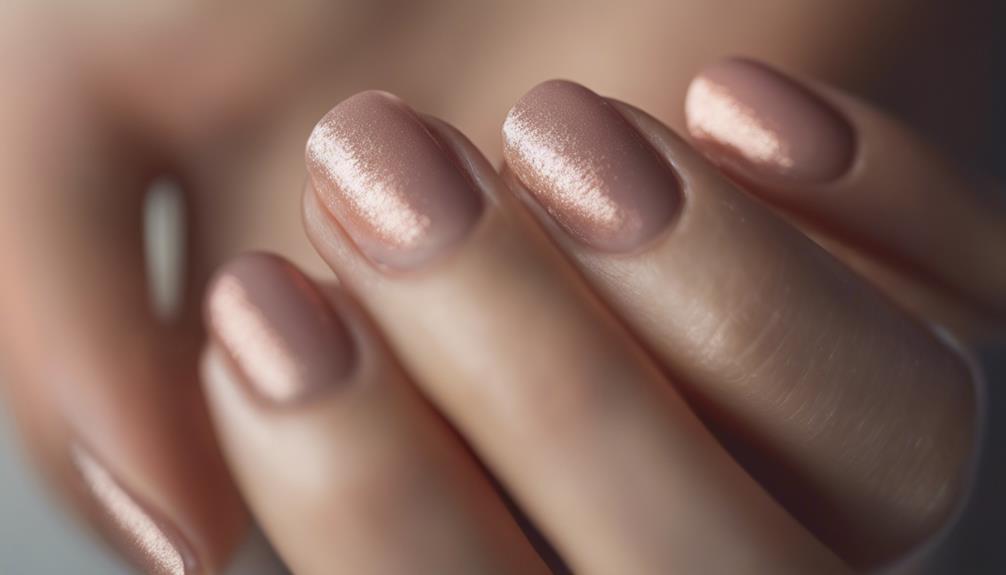
When evaluating press-on nails, it is essential to consider the durability and craftsmanship to ensure a high-quality application and long-lasting wear. Innovations in the nail industry have led to remarkable advancements in press-on nail quality, offering users an array of options that cater to different preferences and needs. Here are four key factors to consider when assessing the quality of press-on nails:
- Material: Opt for press-on nails made from high-quality materials like acrylic or gel for a more natural look and enhanced durability.
- Adhesive: Choose press-on nails that come with superior adhesive technology to ensure a secure and long-lasting bond without damaging your natural nails.
- Design: Look for press-on nails with innovative designs and finishes that mimic salon-quality manicures for a trendy and polished look.
- Customization: Select press-on nails that can be easily trimmed, filed, or painted to suit your desired shape, length, and style, providing a personalized and tailored experience.
Frequently Asked Questions
Can Press-On Nails Damage My Natural Nails?
Press-on nails, when applied and removed correctly, should not damage your natural nails. Ensuring proper technique, including gentle removal and allowing nails to breathe between applications, can help maintain the health of your natural nails.
How Long Can Press-On Nails Stay on Before They Need to Be Removed?
Press-on nails can last up to two weeks before requiring removal. However, for optimal nail health, it is advisable to replace them every 5-7 days to prevent damage and allow your natural nails to breathe.
Can Press-On Nails Be Reused Once They Are Removed?
Press-on nails can often be reused once removed, provided they are in good condition. Proper removal techniques, like soaking in warm water to loosen adhesive, can help preserve the nails for future use.
Are There Any Specific Products Recommended for Safely Removing Press-On Nails?
For safely removing press-on nails, innovative products like gentle nail polish removers with acetone or acetone-free formulas are recommended. These products effectively dissolve adhesives, facilitating easy and damage-free removal of press-on nails.
Are There Any Tips for Preventing Press-On Nails From Popping off Prematurely?
To prevent premature detachment of press-on nails, ensure nails are clean and dry before application. Use a good-quality adhesive and apply pressure for proper bonding. Avoid excessive exposure to water, oils, or rough activities. Regular touch-ups may also help maintain longevity.

